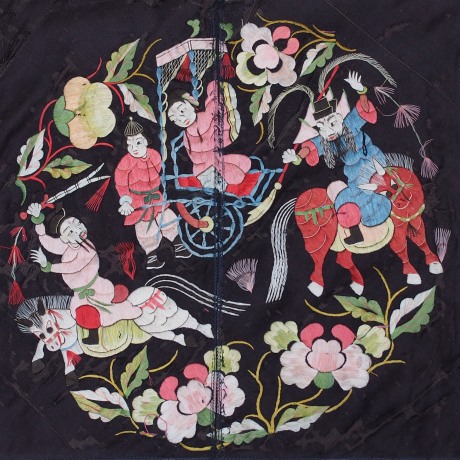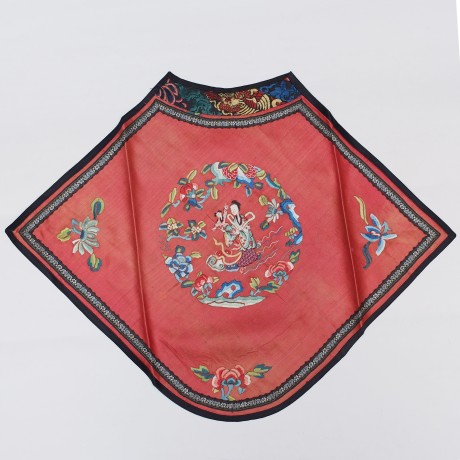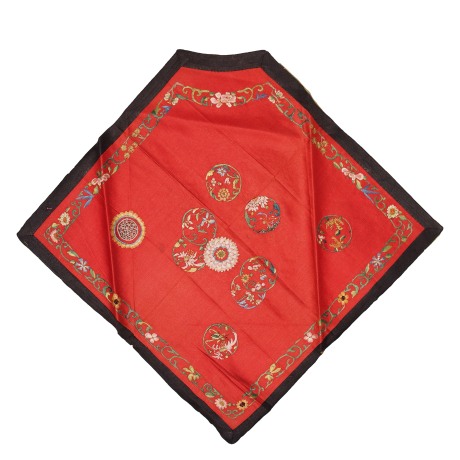L300xW300mm, China
The composition of the embroidery is based on a scene in the Beijing Opera – Return to Jing Zhou.
The story was set in the 3 Kingdoms Period,
WEI – led by East Han chancellor Cao Cao, adviser Sima Yi
WU – led by Sun Quan, adviser Zhou Yu
SHU – led by Liu Bei, general Guan Yu, Zhang Fei and Zhao Yun, adviser Zhu Ge Liang
Sun Quan and Zhou Yu (WU) set up a plan to get Liu Bei (SHU) to hand over his strong hold Jing Zhou. Sun Quan has a beautiful sister, to lure Liu into the trap, he proposed to Liu Bei for a marriage to his sister, a union of the 2 kingdoms. Liu Bei in return would have to go to WU for the wedding. This is a proposal Liu Bei cannot lightly turn down for the sake of his kingdom. Sun Quan however has no real intention of marrying his sister to his enemy, he would wanted to capture Liu Bei and and force him to hand over his kingdom. Luckily before Liu Bei’s departure, his wizard adviser Zhu Ge Liang see through the trick and handed 3 notes to Zhao Yun and asked him to escort Liu Bei to Wu. When Liu Bei crossed to Wu he opened the first note, it asked Liu Bei to visit the father in law of Sun Quan. Impressed by Liu Bei and thinking that a union of the 2 kingdoms is a good idea from Sun Quan, the in law asked for Sun Quan’s mother for her approval for the marriage. The empress dowager agreed and the marriage went ahead. Sun Quan found out he has lost his sister, set out to detained Liu Bei in Wu. Liu Bei opened the second note, it asked for a faked report that Jing Zhou was being attacked by now their common enemy Cao Cao (WEI). Having a great excuse, Liu Bei together with his newly married wife and his men left Wu for Jing Zhou. Sun Quan found out and had his general went after them. Liu Bei then opened his third note, in the note it asked him to leave the defense to his wife. Now in love with Liu Bei, the princess gave the general a hard time and refused to return to Wu. When Liu Bei returned to Jing Zhou, Sun Quan’s army was confronted by Liu Bei’s general Zhang Fei and badly defeated.
A common Chinese phrase came from the story, 賠了夫人又摺兵 (not only losing the girl but the battle as well) – something similar to the phrase “throw the helve after the hatchet”.
Click here to see our wood block prints which also depicted the same opera.











